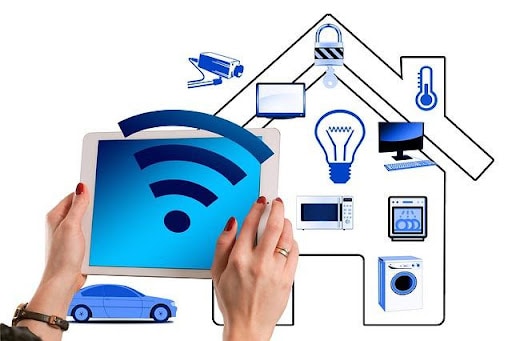Around 2.5 million home intrusions occur in the United States every year. This means that having a smart home monitoring alarm system is both a good idea and a necessity. Knowing that your family, home, and property are safe will give you peace when going to bed every night and make you confident about leaving for work every morning, which is the peace of mind that everyone deserves.
While looking through the different types of smart home monitoring alarm options, finding one that meets your needs can be pretty overwhelming. However, it’s essential to analyze each option thoroughly. Read more here for assistance on your journey to finding a quality monitoring alarm system that’s perfect for you and your home.
What is a Smart Home Monitoring Alarm
Contents
A smart home monitoring alarm refers to a security system used to secure a property through its network of devices and interworking components. Security systems often come in the form of interconnected electronic devices that work together to alert you of breaches on your property and safeguard your home against burglars, among other potential dangers.
What Are the Components of a Home Monitoring Alarm System
- Control Panel: The Control Panel is the heart of your security system, it’s a device that talks with every other installed component and sounds an alarm once there has been a breach in either zone protection or monitored alarms
- Surveillance Cameras: These cameras are used in a variety of ways to monitor your home and reinforce its entire security system. Surveillance cameras are often available in wired and wireless configurations
- Motion Sensors: Motion sensors are used to guard a particular space, and when armed, they create an invisible zone that triggers an alarm when breached. These sensors are often used to protect less-frequented areas in large homes and rooms with valuable items
- Door and Window Sensors: The door and window sensors are devices that work to detect when a particular door or window is closed. They generally come with two parts: one for either side of your house, as well as an electric current collector (or “breaker”) which flows through it in order to create this security circuit whenever any threshold between these areas has been crossed by someone opening their respective locks – preventing burglary.
- Yard Signs and Window Stickers: Although these items may seem like mere marketing props from alarm companies, they play important roles in home security. Yard signs and window stickers are used to inform potential intruders that your property is professionally guarded
- High-Decibel Alarm: When it comes to home security, alarms serve a few different purposes. They include:
○ Alerting and warning you when your house has been broken into
○ Notifying Neighbors about the situation
○ Warding off burglars
○ Transmits the breach to your alarm company (some even inform the authorities)
What Are the Different Types of Smart Home Monitoring Alarm Systems
1. Monitored Home Alarm System
Monitored home alarm systems guarantee that authorities are instantly notified of a break-in. This is because monitored systems alert the monitoring center operators once an alarm is triggered.
Depending on the system you install, an alarm can be triggered by a loud sound via auditory sensors, movement via motion sensors, opening an armed entryway, or manually if need be. When the monitoring center verifies the alarm, they’ll automatically dispatch emergency services.
2. Unmonitored Home Alarm System
Unmonitored systems are often referred to as local alarms. This type of system triggers audible and visual alarms when your system is tripped but leaves it up to you or immediate neighbors to notify the authorities of an emergency.
Although they are more affordable than monitored systems, unmonitored systems don’t provide the same level of security since they don’t alert monitoring centers of your emergency for successive first responder dispatch. Even if the alarm sends a direct alert to your phone, you might be unable to respond.
3. Electric Current Alarm System
This is a primary monitoring tool that is often installed when a home is being built. Electric current systems only monitor entry points like doors and windows and have a low-voltage electrical circuit that flows between those two points. When a door or window closes, the current flows easily, but the circuit gets disrupted and triggers an audible alarm when they are opened.
4.Wireless Home Alarm System
Wireless home alarm systems typically use a control panel and a series of sensors with built-in radio frequency transmitters. When your system is breached, the sensors transmit a signal to the control panel, which then activates the alarm. Wireless systems are more efficient since they allow you to manage your system remotely through your smartphone and integrate smart home functionality like thermostats, video surveillance, and lights.
5. Wired Alarm Systems
Wired systems require a landline phone connection to relay signals to monitoring centers. Although they support essential monitoring capabilities, their exposed wires are liable to destruction or being cut, which will render the entire system ineffective. This is why cellular backup is advised to prevent landline interferences.
Choose a Smart Home Monitoring Alarm that is Right for You
There are a myriad of options when it comes to finding a monitoring alarm for your home, and there are many factors to consider before determining which one works for you. Think about the size of your home, your budget, whether you own the property or are renting, and whether you plan to move in the near future before making a decision.

